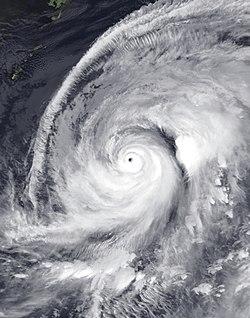Hong Kong is currently grappling with the impact of severe weather conditions as Typhoon Wipha nears the region, bringing with it strong winds and heavy rainfall. According to meteorological reports, the storm is skirting past the city, yet has already triggered significant disruptions and heightened concerns among residents and local authorities. With wind gusts reaching alarming speeds and rainfall inundating streets, the Hong Kong Observatory has issued warnings, urging citizens to remain vigilant as the effects of the typhoon continue to unfold. This article examines the current situation as the city braces for potential challenges in the wake of this natural phenomenon.
Typhoon Wipha Brings Chaos to Hong Kong with Intense Winds and Torrential Rain
As Typhoon Wipha skirted past Hong Kong, the city faced a relentless assault of intense winds and torrential rain that brought daily life to a standstill. The Hong Kong Observatory reported wind gusts exceeding 120 km/h, uprooting trees and causing damage to property. Authorities implemented precautionary measures, urging residents to stay indoors as flooding in low-lying areas presented serious hazards. Local transportation systems saw disruptions, with ferries and trains operating on limited schedules, while numerous flights were delayed or canceled due to adverse conditions.
Emergency services were put on high alert, responding to numerous reports of minor landslides and fallen debris across the region. The public was advised to remain vigilant, particularly in coastal areas vulnerable to storm surges. Amid the chaos, essential services worked tirelessly to restore power and clear roads. The government also set up temporary shelters for residents displaced by the storm. With weather forecasts indicating that conditions may remain unstable, officials are calling for continued caution and preparedness in the coming days.
| Impact | Details |
|---|---|
| Wind Speed | Over 120 km/h |
| Flight Disruptions | Numerous delays and cancellations |
| Emergency Response | Increased alerts for landslides |
| Displacement | Temporary shelters provided |
Emergency Preparedness: Navigating the Challenges of Severe Weather in Urban Areas
Severe weather events, such as Typhoon Wipha impacting Hong Kong, underscore the importance of robust emergency preparedness plans in urban settings. With wind gusts reaching alarming speeds and heavy rainfall causing potential flooding, cities face unique challenges in ensuring safety and continuity of services. Urban dwellers are often caught unprepared, highlighting the need for proactive measures:
- Community Awareness: Initiating public education campaigns to inform citizens about potential risks and safety protocols.
- Infrastructure Resilience: Investing in flood defenses, wind-resistant buildings, and upgraded drainage systems to mitigate damage.
- Emergency Services Coordination: Enhancing communication channels for emergency responders to efficiently address disruptions.
The impact of typhoons can be profound, disrupting transport systems and hindering access to essential services. Addressing these challenges requires a multi-faceted strategy that involves local government, civic organizations, and citizens working collaboratively. A simple point-based table can illustrate the potential consequences of inadequate preparedness:
| Consequence | Description |
|---|---|
| Flooding | Severe water accumulation leading to property damage and road closures. |
| Infrastructure Damage | Loss of essential services due to damaged roads and bridges. |
| Public Safety Risks | Increased danger to residents due to falling debris and power outages. |
Impact Assessment: Understanding the Aftermath and Recovery Efforts in the Typhoon’s Wake
The aftermath of Typhoon Wipha has left a significant impact on Hong Kong, as residents grapple with the consequences of the severe weather that swept through the region. Emergency services have reported widespread disruptions, with damaged infrastructure and flooded streets posing challenges to recovery efforts. Key observations include:
- Severe Property Damage: Many homes and businesses suffered roof and water damage, necessitating immediate repairs.
- Transportation Hurdles: Public transit networks experienced delays, with fallen trees and debris blocking roadways.
- Emergency Response: Local authorities mobilized quickly, deploying teams to clear roads and restore essential services.
- Community Support: Relief efforts are underway, with volunteers assisting those displaced or most affected by the typhoon.
As recovery operations intensify, the resilience of the Hong Kong community is being tested. The government has initiated assessments to determine the extent of damage and prioritize support for the hardest-hit areas. The following table outlines the key statistics identified in the recovery phase:
| Impact Category | Estimated Affected |
|---|---|
| Homes Damaged | 1,500 |
| Business Interruption | 300 |
| Roads Blocked | 50+ |
| Emergency Calls Received | 2,000+ |
Closing Remarks
As Typhoon Wipha continues its path beyond Hong Kong, the repercussions of its strong winds and heavy rainfall are being felt across the region. Authorities are urging residents to remain vigilant as they assess the damage and work towards recovery. With disruptions to transportation and potential flooding in low-lying areas, the city is bracing for a subsequent cleanup and repair effort. As always, safety remains a priority, and local agencies are on high alert to respond to any emergencies that may arise. The impact of Typhoon Wipha serves as a stark reminder of the region’s vulnerability to extreme weather events, prompting ongoing discussions about preparedness and resilience in the face of climate challenges.














